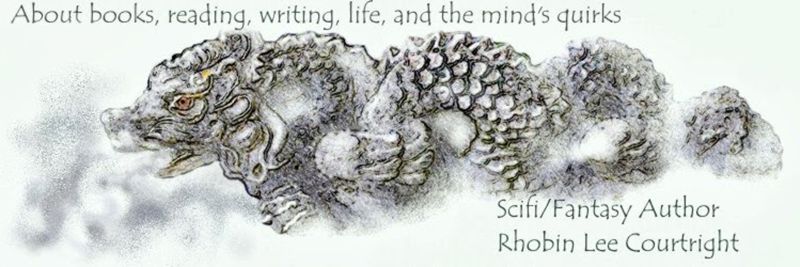Thousands of years ago, when people believed the world a flat circle,
Chronos (or Kronos) was one of the primordial gods with the power of time and
space. Time, of course, controls beginnings and endings. In some cases, legends present
Chronos as the father of chaos, sometimes the descendant of chaos. I tend to
think perhaps the second makes a more logical progression, but this is
mythology.
Occasionally a serpent represents Chronos, which might have led to the Uroboros serpent, a snake caught in a circle eating its tail, which represents an unending cycle. Images exist of Chronos guiding the astrological wheel, another representation of time.
More often, Chronos is a long-bearded man, although other sources show him as a serpent with three heads, one each of a lion, a bull, and a man. Through time, this mythical figure intertwined with other gods such as the Greek Titan Cronus, an agriculture god. Since agriculture follows the seasons, a time element is involved here, too, and it is where the image of father time, an old man with a scythe, came from. Prophesy proclaimed Cronus would eat his own children. His son Zeus escaped the cycle and became the new leader of the gods. Cronus becomes reincarnated as the Roman god Saturn (some sources claimed Saturn was Cronus, the old god having escaped the retribution of Zeus). Is that confusing or what? They all combine to produce the figure of father time we celebrate every New Year's Eve.
With the ties to time and agriculture, the sickle or scythe becomes a symbol of time, changing the tool from one used to harvest grains to one harvesting life. Chronos supposedly watched over, perhaps regulated, past, present, and future time, which is also a new theory in physics.
In Roman mythology, Saturn and Rhea were Titans, elder gods who were the children
of heaven and earth, parents who sprang from the loins of Chaos. Isn’t it funny
how they were so near the creation that we believe? Thomas Bulfinch
in his Bulfinch’s Mythology (1) claims Saturn 'devoured all of his children
except Jupiter (air), Neptune (water), and Pluto (the grave).' This, of course,
ties back to the prophesy affecting the Greek god Chronos and his unorthodox
habit. This also seems to indicate that Saturn not only controlled life, since
without air and water most life expires, and as 'the grave' indicates death or
ending, but also might relate to control over human reality. The Uroboros, and
sadly Cronus and Saturn eating their children, seems to show that time devours
everything, an underlying truth about all life and matter.
Chronos lives with us still became his name became the prefix chrono- indicating time as used in chronology, chronicle, chronological, and chronometer.
The month of January is named after the god Janus, the two-faced god, one face looking behind him, one looking forward. He oversaw pathways and transitions, so guarded gates. Tonight he closes one gate and opens another. In some respects time, pathways, and transitions, Chronos, Cronos, Saturn, and Janus all blend together on this night before the New Year.
Happy New Year!
(1) Bulfinch's Mythology, Thomas Bulfinch, ed. Richard Martin, Harper Collins Publishers, New York, NY, 1991
 | |
| A Chronos-Cronus mix of the time god (clker.com) | . |
Occasionally a serpent represents Chronos, which might have led to the Uroboros serpent, a snake caught in a circle eating its tail, which represents an unending cycle. Images exist of Chronos guiding the astrological wheel, another representation of time.
More often, Chronos is a long-bearded man, although other sources show him as a serpent with three heads, one each of a lion, a bull, and a man. Through time, this mythical figure intertwined with other gods such as the Greek Titan Cronus, an agriculture god. Since agriculture follows the seasons, a time element is involved here, too, and it is where the image of father time, an old man with a scythe, came from. Prophesy proclaimed Cronus would eat his own children. His son Zeus escaped the cycle and became the new leader of the gods. Cronus becomes reincarnated as the Roman god Saturn (some sources claimed Saturn was Cronus, the old god having escaped the retribution of Zeus). Is that confusing or what? They all combine to produce the figure of father time we celebrate every New Year's Eve.
With the ties to time and agriculture, the sickle or scythe becomes a symbol of time, changing the tool from one used to harvest grains to one harvesting life. Chronos supposedly watched over, perhaps regulated, past, present, and future time, which is also a new theory in physics
Chronos lives with us still became his name became the prefix chrono- indicating time as used in chronology, chronicle, chronological, and chronometer.
The month of January is named after the god Janus, the two-faced god, one face looking behind him, one looking forward. He oversaw pathways and transitions, so guarded gates. Tonight he closes one gate and opens another. In some respects time, pathways, and transitions, Chronos, Cronos, Saturn, and Janus all blend together on this night before the New Year.
Happy New Year!
(1) Bulfinch's Mythology, Thomas Bulfinch, ed. Richard Martin, Harper Collins Publishers, New York, NY, 1991

No comments:
Post a Comment